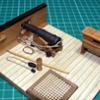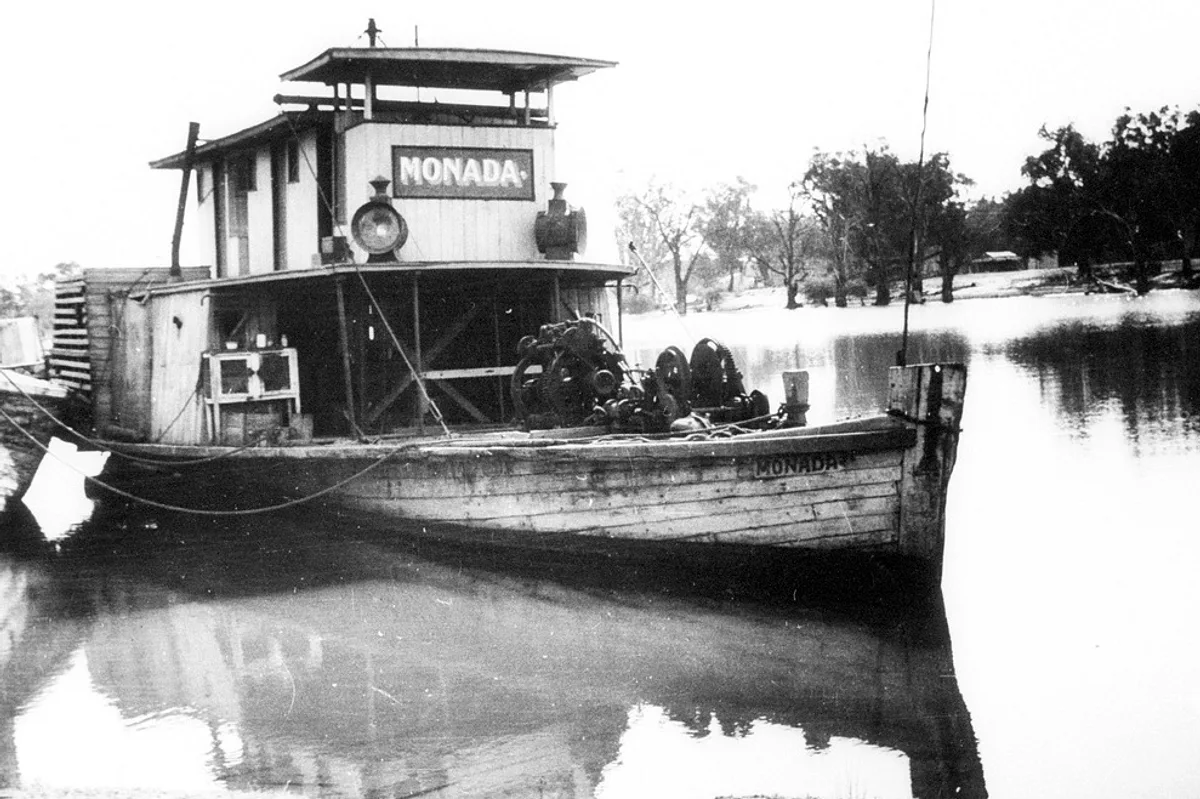-
Posts
5,937 -
Joined
-
Last visited
Content Type
Profiles
Forums
Gallery
Events
Everything posted by BANYAN
-

Interesting ship related book with interesting signature inside
BANYAN replied to alde's topic in Nautical/Naval History
Wow, nice catch. cheers Pat -

HMCSS Victoria 1855 by BANYAN - 1:72
BANYAN replied to BANYAN's topic in - Build logs for subjects built 1851 - 1900
Thanks everyone for the very kind sentiments and encouragement. @Louie da fly thanks, yep aware of that item, but I really think they have that placarded/identified wrongly. I think it is much too large to have been used onboard. More likely is that it was a swivel link used on the permanent mooring buoy allocated to her in Hobson's Bay. Appreciate the pointer. cheers Pat- 1,006 replies
-
- gun dispatch vessel
- victoria
-
(and 2 more)
Tagged with:
-
Great to see you back online here Michael, have been missing your updates. Hope all goes well with your vision and you can find some time to complete the interior of your build. cheers Pat
- 2,215 replies
-

HMCSS Victoria 1855 by BANYAN - 1:72
BANYAN replied to BANYAN's topic in - Build logs for subjects built 1851 - 1900
Very many thanks to all for your very kind messages. The medical team was great, I was up and about that evening (after a four hour procedure), eating normally and getting about the next day, and released from hospital the next. It never ceases to amaze me what these health 'magicians' can do these days. The intention is to now prove my rigging plan by trying it on the model. This should help to resolve some of the remaining issues I have and establish whether some of the leads etc I have used were/are practical. This is not to say the plan is the 'actual' configuration used in the ship itself, but this process should lead to a reasonable 'representative' rigging and belaying plan. Once I start, I encourage you all, especially the more experienced modellers and mariners, to challenge my assumptions. In the interim I am preparing myself for the onslaught of Christmas, especially with my three gorgeous granddaughters (or should I call them 'organised chaos' ' cheers Pat- 1,006 replies
-
- gun dispatch vessel
- victoria
-
(and 2 more)
Tagged with:
-
What a great result Richard, can't wait to see the completed product. Nice work. cheers Pat
-

HMCSS Victoria 1855 by BANYAN - 1:72
BANYAN replied to BANYAN's topic in - Build logs for subjects built 1851 - 1900
Hello all, unfortunately, after my re-start back in June, my modelling ground to a halt yet again with some medical issue I needed to attend to. I have had a bit of a 'C' scare but all is clear now having undergone some colorectal surgery. The doc has given me the all clear (completely clear) so, after some recouperation during the Christmas break, I will be back to the work bench . One positive from this was that, between the various procedures etc, I was able to find some time to complete the first draft of Volume 5 (Rigging and Belaying Plan) of my Book about Victoria. I now have a working basis from which to test rig the model and iron out any issues I encounter, and then update the book. Unfortunately, everything else ground to a halt, including redrawing the revised sheer drawing (to remove a major distortion in the original drawing). Unfortunately, this has identified an error in the model's hull ()depth of hold) which (at scale) is about a centimetre or slightly more too shallow, but only the 'rivet counters' will notice. In the meantime I am preparing some CAD files to experiment having the upper masts and yards CNC turned. If this works, which I am pretty sure it will, I can start assembling the spars and get on with the rigging. Many thanks to @JohnOz for his kind offer to do this. BTW, John should be encourage to show some of his fine engineering and 'smithing' work, especially his cannons, they are a true work of art. I hope everyone has a wonderful Christmas/festive break. cheers Pat- 1,006 replies
-
- gun dispatch vessel
- victoria
-
(and 2 more)
Tagged with:
-
Thanks for sharing these links Mika, these videos could be very useful, especially for those still learning their way around the nomenclature used with the various timbers that made-up a vessel. cheers Pat
-
Wow Keith , despite becoming accustomed to your excellent engineering/metal-smithing skills and results, you continue to amaze. What a great result with those portholes, and that cabin (close-up photos) is so life-like. That is something very difficult to achieve so I 'doff' my hat in salute mate. cheers Pat
-
Great to see you back Keith, I have been missing your build. Sorry to hear of the trials and tribulations with your renovation mate; seems insurance appointed builder same the same world wide - the cheapest builder they can find who then tries to 'screw us out of every dollar they can'. Mine had the hide to inform me that he had bought a large fishing boat from his profits and then had buy a large 'white rock'; for the missus to compensate. cheers Pat
-
A great result, and excellent work on this SIB model Glen, my first thought was 'Oh my singed whiskers' - that would have been 'warm work' in the bow. Can't wait to see what idea you generate for your next extravaganza. cheers Pat
- 156 replies
-
- Queen Annes Revenge
- bottle
-
(and 1 more)
Tagged with:
-
That is stunning work Ilhan. Very precise joinery and metal smithing at that scale. cheers Pat
-
Well that's a relief Glen, I can ease off on the 'pucker' factor' now Great job and excellent description on how to get the job done, football distractions aside. lets hope some of those reflections still show once yopu add the waves etc. cheers Pat
- 156 replies
-
- Queen Annes Revenge
- bottle
-
(and 1 more)
Tagged with:
-
In my proposal for a 'cool safe' I mentioned seeing these on some Murray River (Victoria/NSW, Australia) paddle steamers. Here are two photos of PS Adelaide I took some years back with a cool safe on the roof of her fore cabin structure. I also found one on the 'net' in a BLOG about Murray River paddle steamers (but failed to not the blog - sorry), and a close-up of a cool safe that was advertised on a local auction site. I hope these are useful Keith. As I mentioned in a PM to Keith, I have seen these in a more ovalised/rounded shape also but cannot find a photo. One 'fly in the ointment' though, note the shape and colour of the navigation light pole on the wheelhouse roof. Maybe a potential candidate also (although a little smaller and less symmetrical in shape than you show). cheers Pat
About us
Modelshipworld - Advancing Ship Modeling through Research
SSL Secured
Your security is important for us so this Website is SSL-Secured
NRG Mailing Address
Nautical Research Guild
237 South Lincoln Street
Westmont IL, 60559-1917
Model Ship World ® and the MSW logo are Registered Trademarks, and belong to the Nautical Research Guild (United States Patent and Trademark Office: No. 6,929,264 & No. 6,929,274, registered Dec. 20, 2022)
Helpful Links
About the NRG
If you enjoy building ship models that are historically accurate as well as beautiful, then The Nautical Research Guild (NRG) is just right for you.
The Guild is a non-profit educational organization whose mission is to “Advance Ship Modeling Through Research”. We provide support to our members in their efforts to raise the quality of their model ships.
The Nautical Research Guild has published our world-renowned quarterly magazine, The Nautical Research Journal, since 1955. The pages of the Journal are full of articles by accomplished ship modelers who show you how they create those exquisite details on their models, and by maritime historians who show you the correct details to build. The Journal is available in both print and digital editions. Go to the NRG web site (www.thenrg.org) to download a complimentary digital copy of the Journal. The NRG also publishes plan sets, books and compilations of back issues of the Journal and the former Ships in Scale and Model Ship Builder magazines.





